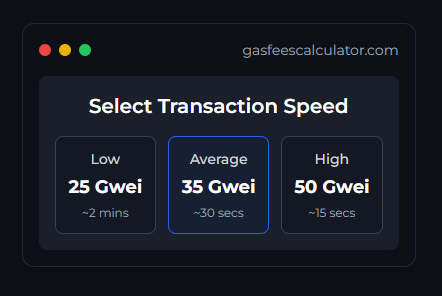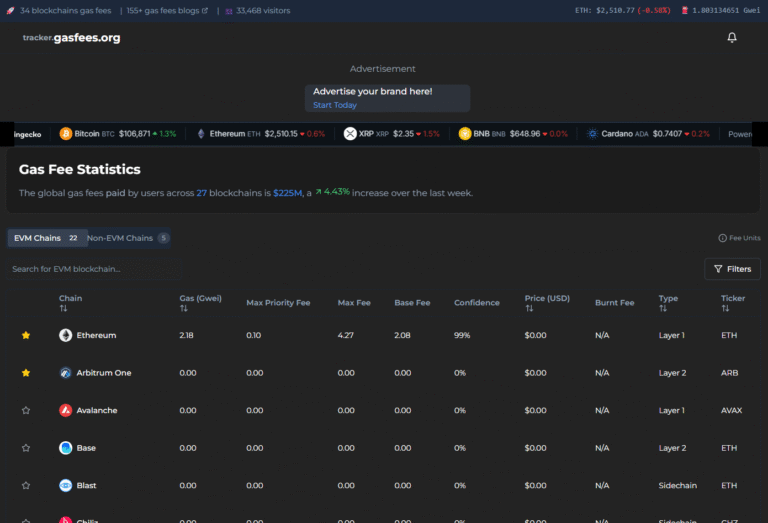
What are CELO gas fees?
Written By: Mr. GasMan
Introduction
CELO is a blockchain ecosystem with a unique focus on increasing cryptocurrency adoption among smartphone users. Similar to Ethereum and various other blockchains, CELO requires users to pay gas fees for transactions and smart contract executions. However, what sets CELO apart is its innovative approach to gas fees, its dual-token system, and its mission to simplify and democratize access to blockchain technology.
Understanding CELO Gas Fees
In the world of cryptocurrencies and blockchains, gas fees are a fundamental concept. They represent the cost associated with executing operations on a blockchain network. Gas fees are essential for several reasons:
- Resource Compensation Gas fees serve as compensation for the computational resources required to process and validate transactions on the blockchain. These resources include computing power, storage, and network bandwidth.
- Network Security By imposing gas fees, blockchain networks deter malicious actors from flooding the network with unnecessary transactions, a tactic known as a Denial-of-Service (DoS) attack. Gas fees make it financially impractical to overwhelm the network with spam transactions.
- Resource Allocation Gas fees help allocate network resources efficiently. Transactions with higher fees are prioritized by miners and validators, ensuring that critical transactions are processed promptly.
CELO’s Unique Approach to Gas Fees
CELO’s approach to gas fees is distinctive and user-friendly. It employs a dual-token system, comprising CELO and stablecoins like cUSD and cEUR. This dual-token system simplifies transactions and enhances predictability, particularly in regions where traditional banking access is limited.
- CELO (cGLD) CELO is CELO’s native cryptocurrency and plays a vital role in network governance. Holders of CELO have the power to participate in protocol decisions, making it a valuable asset for long-term supporters of the network.
- Stablecoins In addition to CELO, CELO’s ecosystem includes stablecoins like cUSD (CELO Dollar) and cEUR (Celo Euro). These stablecoins are pegged to their respective fiat currencies and are used for everyday transactions on the network.
Flexible Payment Options for CELO Gas Fees
What sets CELO apart from many other blockchains is the flexibility in paying transaction fees. Unlike Ethereum, which mandates that gas fees be paid exclusively in Ether (ETH), CELO allows users to pay transaction fees using various ERC-20 tokens, including stablecoins like cUSD and cEUR.
This approach provides a level of flexibility that caters to a wide range of users. It ensures that individuals who may not hold the native CELO token can still participate in the CELO ecosystem without the need for complex token conversions or high volatility risks.
Transaction Fees on CELO: How They Work
To better understand how transaction fees work on CELO, let’s delve into the specifics:
- Gas Limit Every transaction on CELO specifies a gas limit, which determines the maximum computational steps that can be executed. If a transaction exceeds this limit, it will fail.
- Gas Price The gas price, set by the user, defines the cost per computational step. Higher gas prices incentivize miners and validators to prioritize the transaction. Users can adjust the gas price to control the speed at which their transactions are processed.
- Payment in Stablecoins CELO distinguishes itself by allowing users to pay transaction fees in stablecoins, such as cUSD and cEUR. This simplifies fee calculations and provides users with a clear understanding of the costs associated with their transactions.
Advantages of CELO’s Gas Fee Model
CELO’s gas fee model offers several advantages:
- User-Friendly Paying gas fees in stablecoins makes transactions more accessible and user-friendly, especially for those new to blockchain technology.
- Predictability Stablecoin-based gas fees offer greater fee predictability, as users can easily calculate the cost of transactions in familiar fiat-pegged terms.
- Inclusivity The option to pay gas fees in various ERC-20 tokens enhances inclusivity, ensuring that a broader audience can participate in the CELO ecosystem.
- Reduced Volatility Risk Users are less exposed to the price volatility of the native CELO token when they can pay fees in stablecoins.
Conclusion: The Role of CELO Gas Fees
In conclusion, CELO gas fees play a vital role in the CELO blockchain ecosystem. They ensure the security and efficiency of transactions and smart contract executions while offering unique features like payment flexibility in stablecoins. Understanding how CELO gas fees work is essential for anyone looking to utilize this blockchain for various purposes. By staying informed and monitoring gas fees, users can navigate the CELO network more effectively and make the most of its innovative features.
- WEBSITE: https://celo.org
- TICKER: $CELO
- BRIDGE: https://docs.celo.org/protocol/bridge
- DOCS: https://docs.celo.org/overview
- FAUCET: https://faucet.celo.org/alfajores
- SCAN: https://celoscan.io
- WALLETS: https://docs.celo.org/wallet
- GITHUB: https://github.com/celo-org/celo-blockchain
- CONSENSUS: Layer 2



